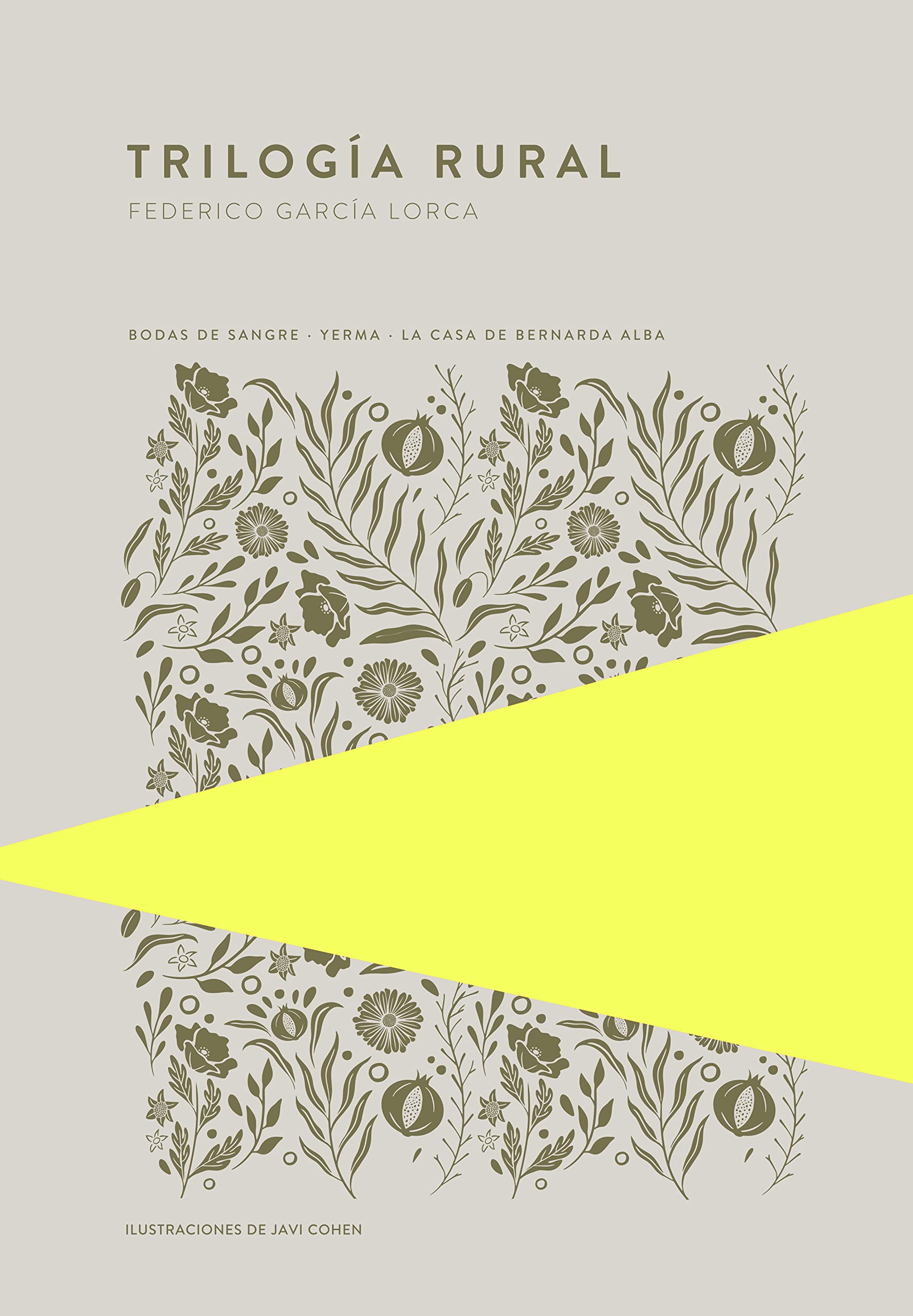
Review of the book «Rural Trilogy» by Federico García Lorca.
The Rural Trilogy is a collection of three plays written by Federico García Lorca, comprising Blood Wedding, Yerma and The House of Bernarda Alba. These plays, written in the 1930s, address themes such as tradition, religion, desire and death, through the lens of Spanish rural life.
Blood Wedding tells the story of a bride who runs away with her lover, leaving her fiancé behind. The play explores themes such as honor, passion, and violence. Yerma focuses on the life of a woman who desires to have children, but is unable to conceive them, leading her down a dark path of obsession and madness. Lastly, The House of Bernarda Alba follows the lives of five daughters of a widow living in an Andalusian village. The play explores themes such as sexual repression, envy, and death.
The Rural Trilogy is a masterpiece by Lorca, notable for its lyrical and poetic writing, as well as its ability to portray rural Spanish life. Each work addresses universal themes in a unique way, and Lorca uses Spanish tradition and culture as a backdrop to explore the human condition.
Blood Wedding is particularly notable for its depiction of passion and violence. The play presents a poignant portrait of human tragedy, as the characters struggle with their inner desires and fears. Yerma, on the other hand, is a profound exploration of obsession and madness, and is notable for its use of metaphors and symbolism to convey the underlying themes.
The House of Bernarda Alba is a particularly interesting work due to its exploration of sexual repression and envy. Lorca presents a disturbing portrait of life in a patriarchal society, where women are oppressed and repressed by cultural and religious norms.
Federico García Lorca (1898-1936) was a Spanish poet, playwright and prose writer, considered one of the most important figures in 20th-century Spanish literature. He was born in Granada to a cultured and well-off family. From a young age he showed a great love for poetry and music, and in his adolescence he began to write his first verses.
In 1919 he moved to Madrid to study Philosophy and Letters, where he came into contact with the leading figures of the literary and artistic world of the time. There he met Salvador Dalí, Luis Buñuel and other members of the Generation of ’27, with whom he maintained a close friendship and collaboration. In 1927 he published his best-known work, “Romancero gitano”, which brought him fame and international recognition.
In addition to his poetic work, Lorca also stood out as a playwright, his most famous works being “Bodas de sangre”, “Yerma” and “La casa de Bernarda Alba”, which deal with themes such as death, love, sexuality and social oppression. Lorca was an artist committed to his time and to the defence of human rights, and his work reflects his concern for injustice and oppression.
During the Spanish Civil War, Lorca was arrested and shot by Franco’s forces in August 1936, at the age of 38. His premature and violent death made Lorca a symbol of resistance against the Franco dictatorship and his work continues to be studied and admired throughout the world.
In short, Federico García Lorca’s Rural Trilogy is a masterpiece of Spanish literature, notable for its lyrical and poetic writing, as well as its exploration of universal themes through Spanish rural life. The collection of works remains relevant today, and is a testament to Lorca’s literary genius.
Source: https://algunoslibrosbuenos.com/trilogia-rural-federico-garcia-lorca


